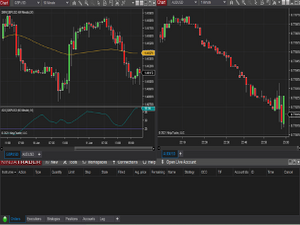Forex Trading Platform
A forex trading platform is a software application that enables traders to buy and sell foreign currencies (forex) online. It provides real-time market data, charting tools, order management, and risk management capabilities.
Key Features:
Real-time Market Data: Displays live quotes for currency pairs, allowing traders to make informed decisions.
Charting Tools: Offers various charting tools for technical analysis, including candlestick charts, moving averages, and trendlines.
Order Management: Allows traders to place, modify, and cancel orders with ease.
Risk Management: Provides stop-loss and take-profit orders to limit potential losses and lock in profits.
Trading Signals: Some platforms offer trading signals to help traders identify potential trading opportunities.
News and Analysis: Provides access to news headlines, market analysis, and economic data that can influence currency prices.
Types of Forex Trading Platforms:
Web-based Platforms: Accessible through a web browser, providing convenience and cross-platform compatibility.
Desktop Platforms: Installed on a computer, offering more advanced features and customization.
Mobile Platforms: Designed for smartphones and tablets, allowing traders to access markets on the go.
Benefits of Using a Forex Trading Platform:
Access to Global Markets: Provides access to foreign exchange markets around the world, 24/7.
Real-time Pricing and Analysis: Enables traders to make quick decisions based on up-to-date market information.
Automated Trading: Some platforms offer automated trading features, such as expert advisors (EAs), to execute trades based on predefined rules.
Risk Management Tools: Helps traders manage risk effectively with stop-loss and take-profit orders.
Community Support: Many platforms offer forums and chat rooms where traders can connect and share knowledge.
Considerations When Choosing a Forex Trading Platform:
Features: Determine the essential features you need, such as charting capabilities, order types, and risk management tools.
User Interface: Choose a platform with an intuitive and user-friendly interface that meets your skill level.
Reliability: Ensure the platform is reliable and provides consistent access to market data.
Broker Support: Consider the level of support and resources offered by the broker associated with the platform.
Pricing: Compare the costs associated with using different platforms, including spreads, commissions, and subscription fees.
